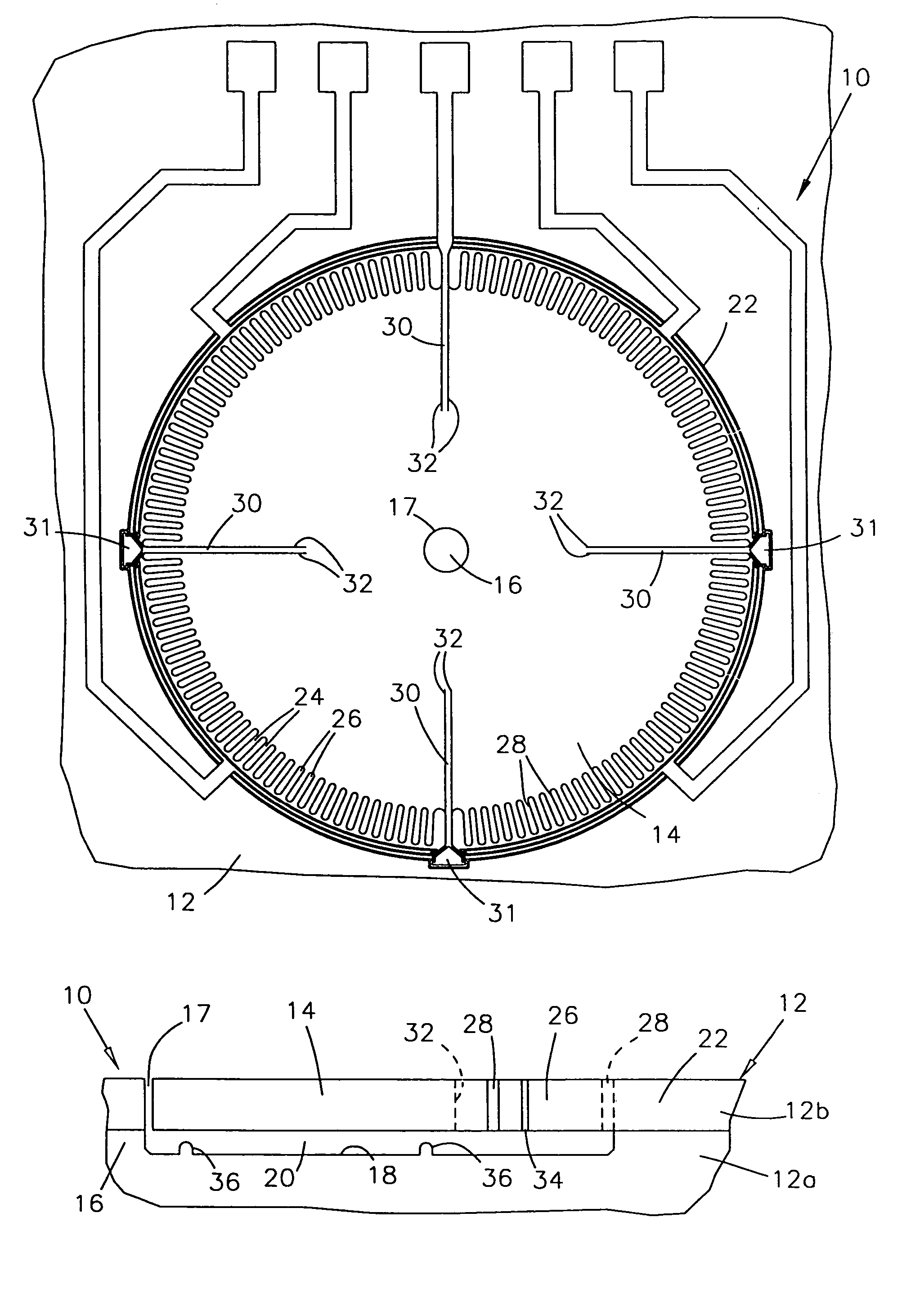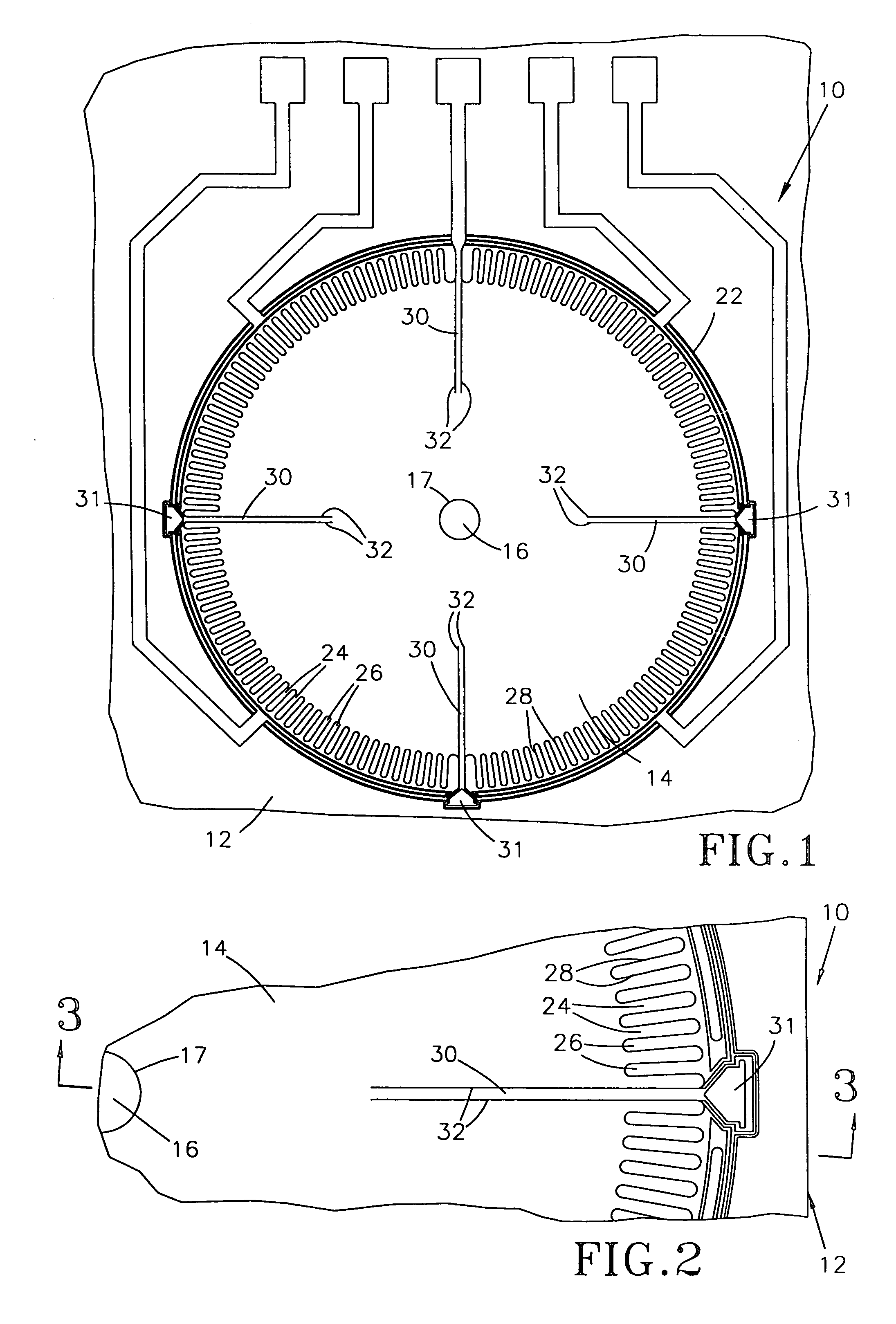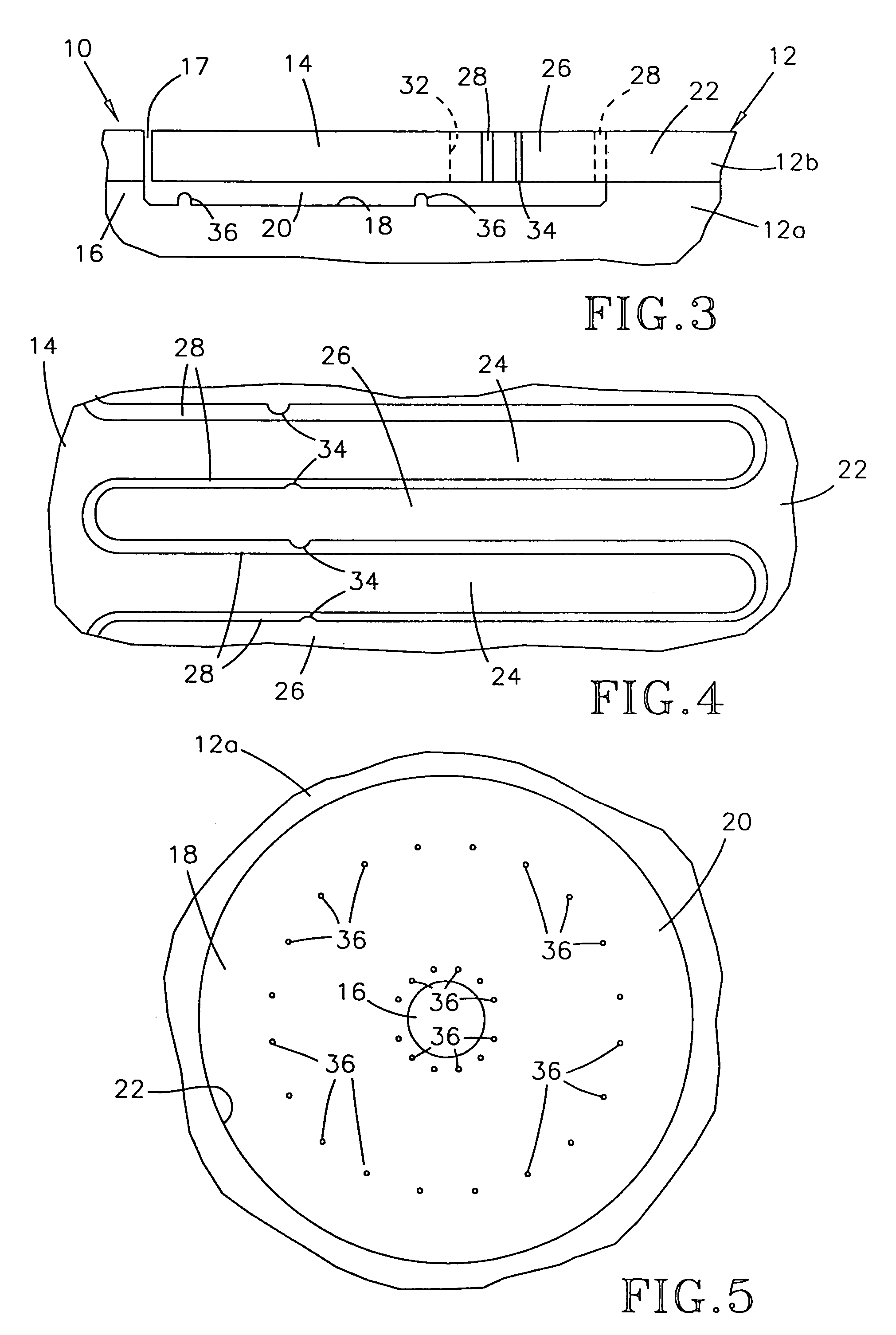Deep reactive ion etching process and microelectromechanical devices formed thereby
a deep reactive ion and etching technology, applied in the field of microelectromechanical system (mems) devices formed by etching, can solve the problems of difficult to achieve a 10:1 aspect ratio capable, traditional etching techniques are not generally well suited for mass-producing silicon micromachines, etc., to achieve constant gap width, taper and increase the width of the mask
- Summary
- Abstract
- Description
- Claims
- Application Information
AI Technical Summary
Benefits of technology
Problems solved by technology
Method used
Image
Examples
Embodiment Construction
[0021]FIGS. 1 through 5 represent a MEMS device 10 fabricated with a DRIE process in accordance with the present invention, with masking steps of the DRIE process being represented in FIGS. 6 through 8. The device 10 is represented as a rotational accelerometer of the type disclosed by Rich, which is incorporated herein by reference. However, those skilled in the art will appreciate that the device 10 could be employed and modified for a variety of applications, including the rate sensors and accelerometers taught by Putty et al., Sparks and Zarabadi et al.
[0022]As illustrated, the device 10 includes a proof mass 14 formed in a sensing die 12. The die 12 is shown as including a semiconductor layer 12b on a substrate 12a (FIG. 3). A preferred material for the semiconductor layer 12b is epitaxial silicon and a preferred material for the substrate 12a is single-crystal silicon, though it is foreseeable that other materials could be used. For example, the substrate 12b could be formed o...
PUM
| Property | Measurement | Unit |
|---|---|---|
| width | aaaaa | aaaaa |
| width | aaaaa | aaaaa |
| width | aaaaa | aaaaa |
Abstract
Description
Claims
Application Information
 Login to View More
Login to View More - R&D
- Intellectual Property
- Life Sciences
- Materials
- Tech Scout
- Unparalleled Data Quality
- Higher Quality Content
- 60% Fewer Hallucinations
Browse by: Latest US Patents, China's latest patents, Technical Efficacy Thesaurus, Application Domain, Technology Topic, Popular Technical Reports.
© 2025 PatSnap. All rights reserved.Legal|Privacy policy|Modern Slavery Act Transparency Statement|Sitemap|About US| Contact US: help@patsnap.com



